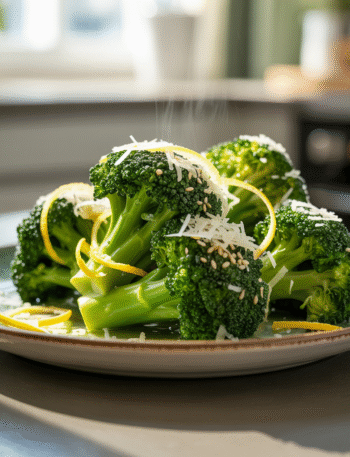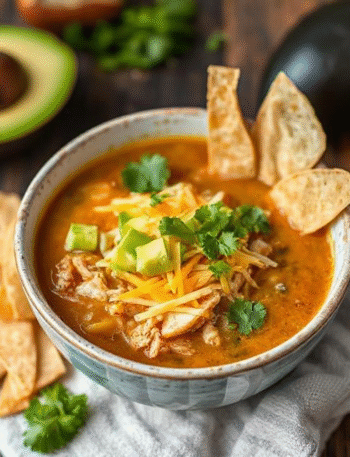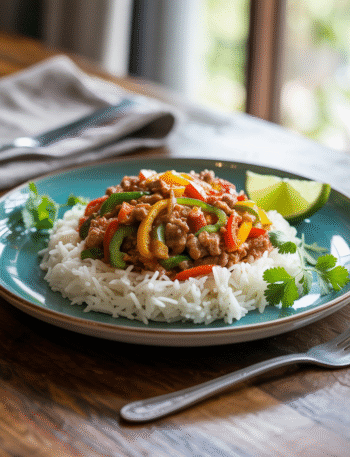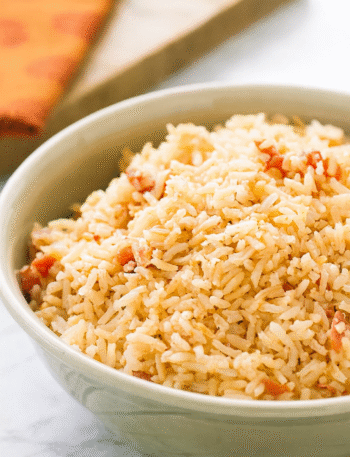
Craving that perfect combination of fluffy rice, tender shrimp, and savory flavors that make Chinese takeout so irresistible? This shrimp fried rice recipe brings all those amazing restaurant flavors right to your kitchen. Whether you’re looking for a quick weeknight dinner or want to impress guests with your homemade fried rice skills, this recipe delivers every single time. You can also pair this tasty meal with Sweet and Sour Red Cabbage to add a tangy, flavorful twist.
Making easy shrimp fried rice at home isn’t just about saving money – it’s about controlling the quality of ingredients and creating a dish that’s fresher and more flavorful than any takeout container. Plus, you probably have most of the ingredients sitting in your kitchen right now.
Why Make Homemade Shrimp Fried Rice
Cost-Effective and Customizable
When you make your own shrimp fried rice recipe, you can control every aspect of the dish. Restaurant portions often leave you wanting more, but homemade versions let you pile on the shrimp and vegetables exactly how you like them. A single batch typically costs less than ordering takeout and feeds your whole family.
Healthier Than Restaurant Versions
Takeout fried rice can be high in sodium and oil. Some restaurants use MSG, which the FDA considers safe; making it at home lets you control these ingredients. Your homemade version uses fresh ingredients, quality oil, and just the right amount of seasoning. You can even swap in brown rice for extra fiber and nutrients.
Perfect for Meal Prep
This Chinese fried rice recipe makes excellent leftovers and freezes beautifully. Make a big batch on Sunday, and you’ll have quick lunches or dinners ready throughout the week. It reheats perfectly in the microwave or on the stovetop.
Tricks For Perfect Fried Rice
Use Day-Old Rice or Quick-Dry Fresh Rice
The most important secret to amazing homemade fried rice is using day-old rice that’s been refrigerated overnight. Fresh rice contains too much moisture and will create a sticky, mushy mess. The refrigeration process dries out the rice grains, allowing them to separate easily and develop that perfect, slightly crispy texture.
For emergency rice prep, spread hot rice on a sheet pan to steam off moisture; chill until cold and dry (about 1 hour or as needed). The key is getting the rice cool and dry, not a fixed time.
Master the High Heat Technique with “Hot Wok, Cold Oil”
Restaurants achieve that distinctive wok hei (breath of the wok) flavor by cooking over extremely high heat, though you can only approximate this on most home burners. Use the highest setting your stove allows and work quickly. Heat your wok or pan until it’s smoking hot, then add oil – this “hot wok, cold oil” technique prevents sticking and creates the slightly smoky flavor.
Your pan should be smoking hot before you add oil. The rice should sizzle aggressively when it hits the pan. This high heat creates texture and prevents the ingredients from steaming.
Cook Components Separately and Avoid Overcrowding
Don’t throw everything in the pan at once. Each ingredient requires a different cooking time and technique. Cook in batches to keep the pan screaming hot and avoid steam:
- Shrimp: Cook first until pink and opaque (or to 145°F/63°C), then remove
- Eggs: Scramble until just set but still slightly wet
- Aromatics: Garlic, ginger, and onions need just 30 seconds
- Rice: Gets the longest cooking time to develop crispiness
- Vegetables: Added near the end to maintain texture
Overcrowding lowers the pan temperature and creates steam instead of the crispy texture you want.
Control Your Oil and Sauce
Start with less oil than you think you need. You can always add more, but too much oil makes greasy fried rice. Add sauces near the end and don’t drown the rice – this prevents sogginess and preserves texture. Pour sauce while tossing continuously to ensure even distribution without creating soggy spots.
How Our Readers Make This Recipe Their Own
Creative Protein Combinations
Sarah from Texas adds both shrimp and diced ham for what she calls “surf and turf fried rice.” She uses about half the shrimp called for in the recipe and adds a cup of diced leftover ham.
Mike, a busy dad from California, makes “cleanup fried rice” using whatever leftover proteins he has in the fridge. He’s successfully used leftover grilled chicken, pork tenderloin, and even leftover meatballs cut into small pieces.
Vegetable Variations
Jennifer from Maine adds fresh corn kernels and diced bell peppers for extra crunch and sweetness. She says the corn pairs beautifully with the shrimp and adds natural sweetness that balances the salty soy sauce.
Dave from Oregon grows his own vegetables and changes the mix seasonally. In summer, he uses fresh peas, zucchini, and cherry tomatoes. Winter versions include roasted butternut squash and Brussels sprouts.
Sauce Adaptations
Lisa from New York makes a spicier version by adding sriracha to the sauce mixture and topping with sliced jalapeños. She also uses a splash of rice vinegar for extra tang.
Carlos from Florida creates a fusion version by adding a squeeze of lime juice and fresh cilantro at the end, giving it a slightly Mexican-Asian twist that his family loves.
Rice Alternatives
Health-conscious reader Amanda from Colorado substitutes half the rice with riced cauliflower for a lower-carb version. She cooks the cauliflower rice separately first to remove excess moisture, then combines it with the regular rice.
Tom from Michigan uses only brown rice and adds extra sesame oil to compensate for the nuttier flavor of brown rice.
More Rice Recipes
Classic Fried Rice Variations
If you love this shrimp fried rice recipe, try these other delicious rice dishes:
Chicken Fried Rice: Follow the same method but substitute 1 pound diced cooked chicken for the shrimp. Add it back to the pan with the eggs for the final toss.
Beef Fried Rice: Use leftover steak or roast beef, cut into small cubes. The key is using already-cooked beef and just heating it through.
Vegetable Fried Rice: Skip the protein and double up on vegetables. Add extra eggs for protein, and consider including cashews or peanuts for crunch.
International Rice Dishes
Spanish-Style Rice: Similar technique but with Spanish flavors – use olive oil, add diced tomatoes, bell peppers, and season with smoked paprika and saffron.
Korean Kimchi Fried Rice: Add chopped kimchi to your fried rice for a spicy, fermented kick. Note that cooking kimchi kills most probiotics; for live cultures, add some uncooked kimchi at the end or serve it on top.
Thai Basil Fried Rice: Use fish sauce (often combined with soy and oyster sauce) instead of just soy sauce, add Thai basil leaves, and finish with a squeeze of lime juice.
Rice Bowl Recipes
Teriyaki Rice Bowls: Serve your homemade fried rice topped with teriyaki-glazed vegetables and protein.
Coconut Rice: Cook rice in coconut milk for a creamy, slightly sweet base that pairs beautifully with Asian flavors.
Shrimp Fried Rice
Ingredients
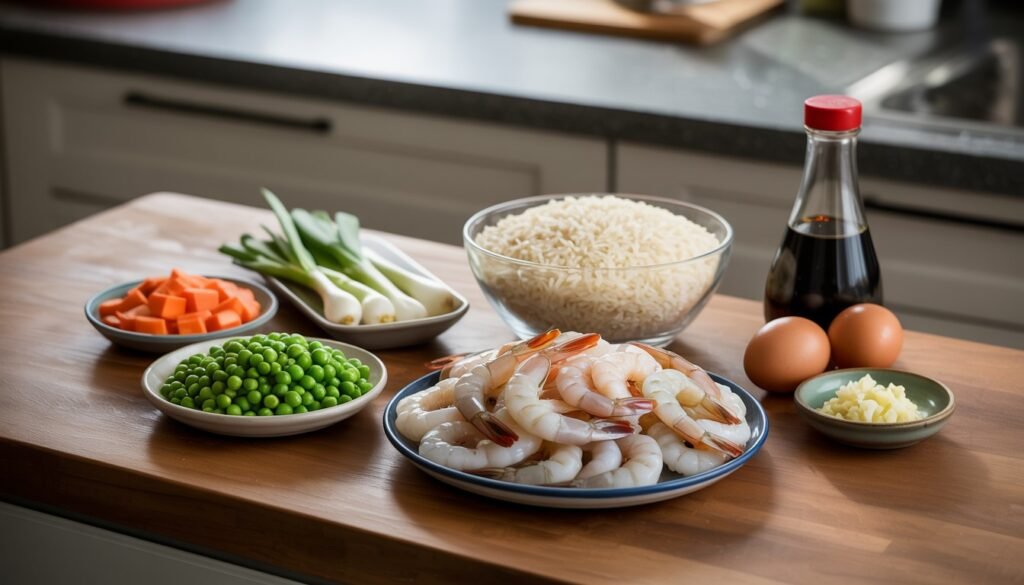
For the Rice Base:
- 3 cups cooked jasmine or long-grain white rice (day-old and refrigerated)
- 1 lb shrimp, 31/40 count (often sold as ‘large’), peeled and deveined
- 3 large eggs (beaten)
- 3 tablespoons vegetable oil (divided)
Vegetables:
- 1 cup frozen mixed vegetables (peas, carrots, corn)
- 3 green onions (chopped, whites and greens separated)
- 2 cloves garlic (minced)
- 1 teaspoon fresh ginger (grated)
- 1 small onion (diced, optional)
Sauce and Seasonings:
- 3 tablespoons low-sodium soy sauce
- 1 tablespoon oyster sauce
- 1 teaspoon sesame oil
- 1/2 teaspoon sugar
- Salt and white pepper to taste
- 1 tablespoon dry sherry (good substitute for Shaoxing wine, optional)
Optional Garnishes:
- Extra sliced green onions
- Sesame seeds
- Chili oil or sriracha
- Fresh cilantro
Method
Prep Phase (10 minutes)
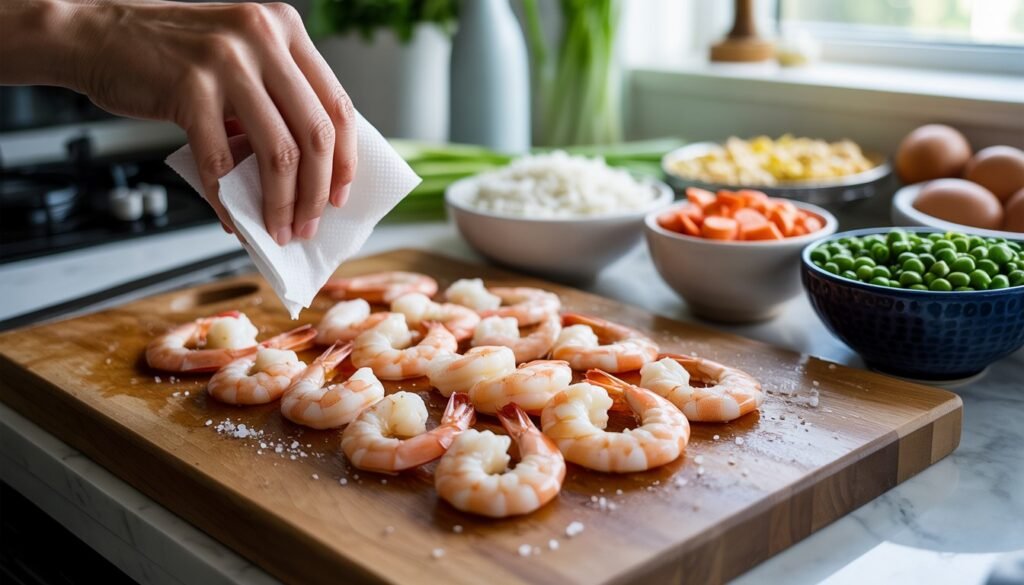
- Prepare ingredients: Pat shrimp dry and season with salt and pepper. If using frozen shrimp, ensure they’re completely thawed and drained. Dice all vegetables and measure out sauces.
- Make sauce mixture: In a small bowl, whisk together soy sauce, oyster sauce, sesame oil, sugar, and dry sherry if using.
- Beat eggs: Whisk eggs with a pinch of salt in a small bowl.
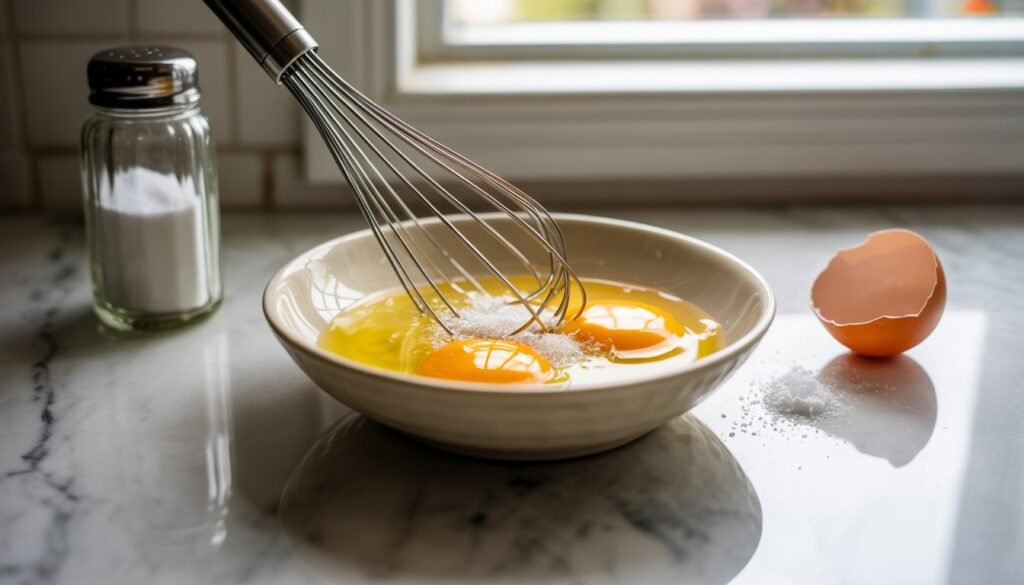
Cooking Phase (15 minutes)
Step 1: Heat Your Pan
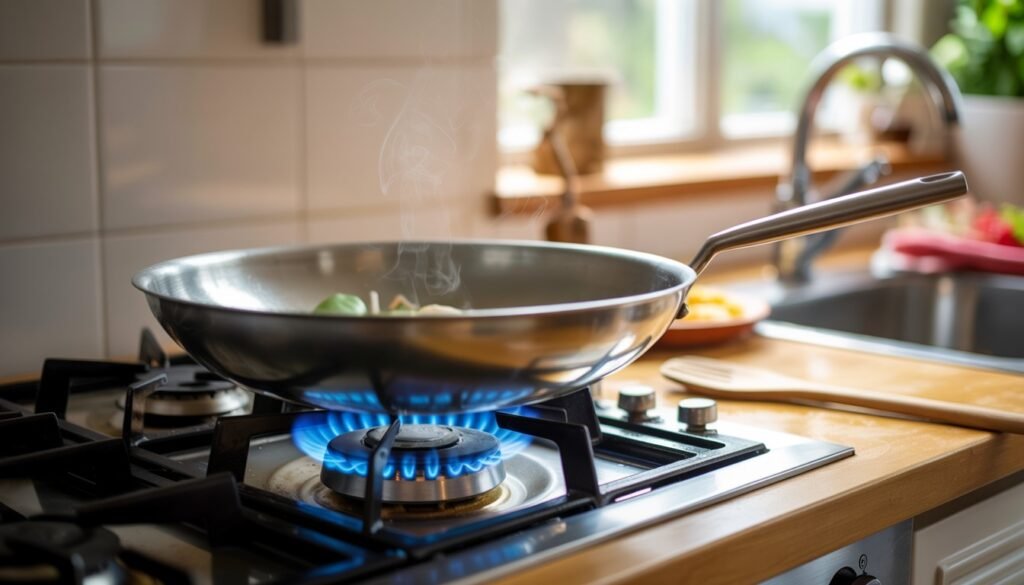
Heat your wok or large heavy-bottomed skillet over the highest heat setting until it’s smoking hot. This “hot wok” technique is crucial for proper texture.
Step 2: Cook the Shrimp (3-4 minutes)
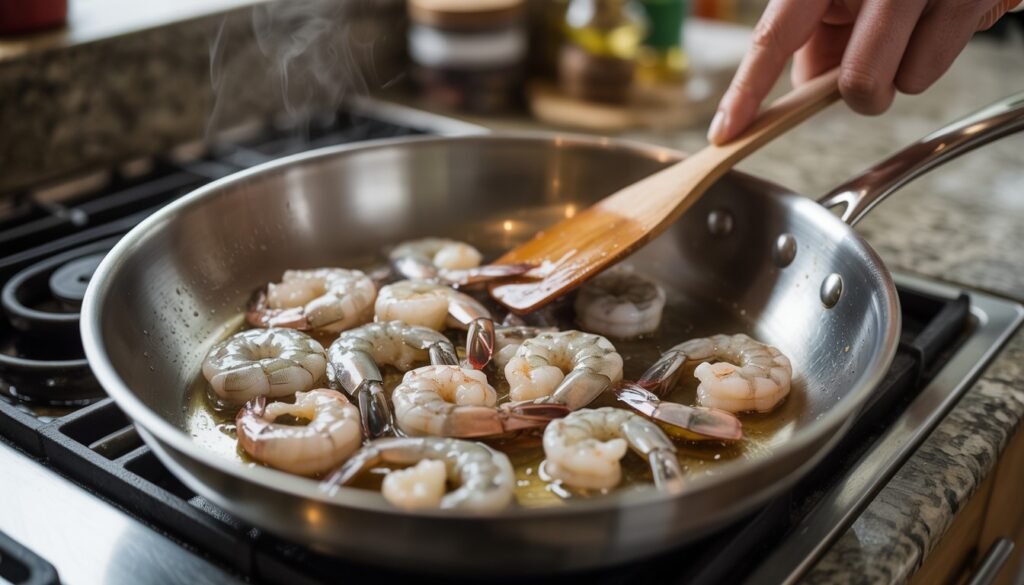
Add 1 tablespoon vegetable oil to the smoking hot pan (“cold oil” technique). Add shrimp in a single layer, making sure not to overcrowd. Cook without moving for 2 minutes until bottoms are pink, then flip and cook another 1-2 minutes. Cook shrimp just until pink and opaque (or to 145°F/63°C); they’ll curl into a loose ‘C’—a tight ‘O’ means overcooked. Remove to a plate and set aside.
Step 3: Scramble the Eggs (2 minutes)
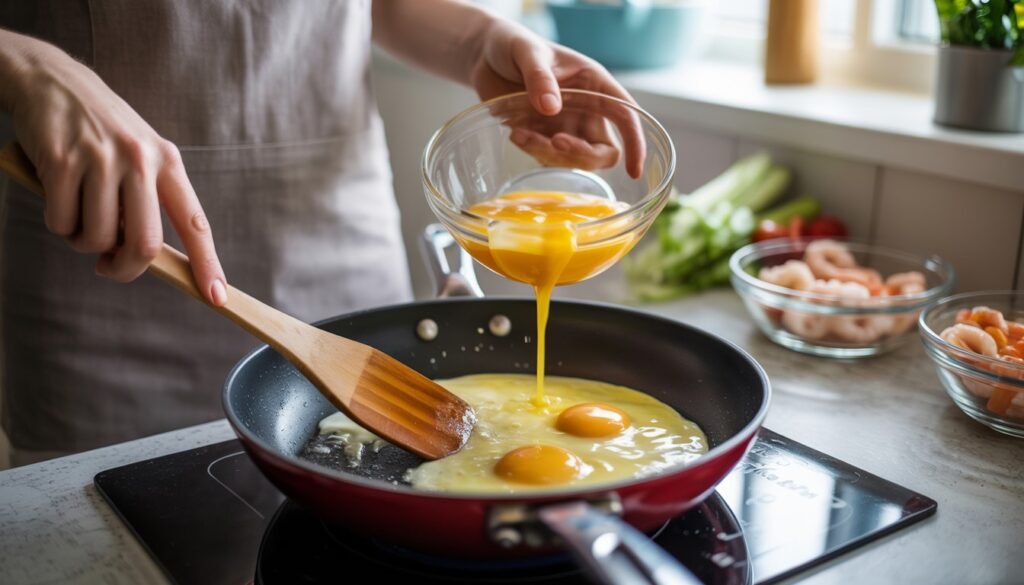
In the same hot pan, add beaten eggs and let them sit for 15 seconds, then gently stir and scramble until just set but still slightly wet and creamy. The eggs will continue cooking from residual heat. Remove eggs and add to plate with shrimp.
Step 4: Build Aromatic Base (2-3 minutes)
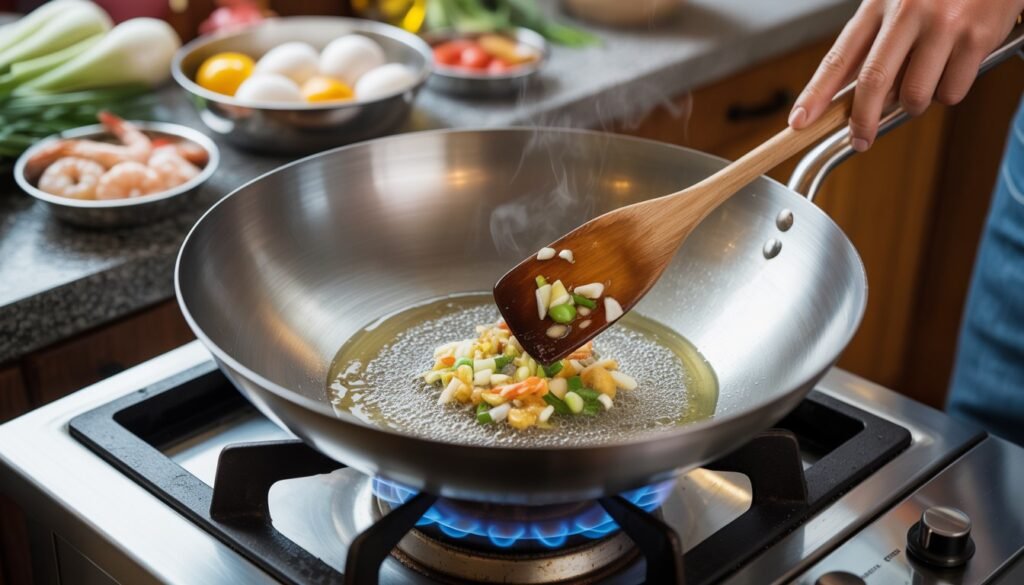
Add 1 tablespoon oil to the hot pan. Add white parts of green onions, minced garlic, and grated ginger. Stir-fry for 30 seconds until fragrant but not browned. If using diced onion, add it now and cook for 1-2 minutes until translucent.
Step 5: Fry the Rice (5-6 minutes)
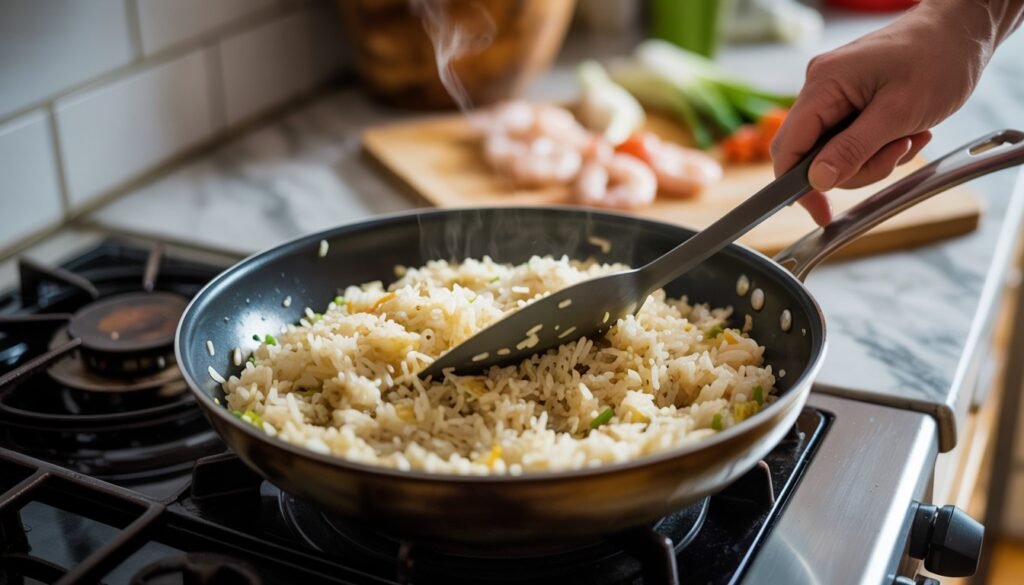
Add the remaining tablespoon of oil to the pan. Add day-old rice, breaking up any clumps with your spatula or wooden spoon. Spread rice in an even layer and let it sit undisturbed for 1 minute to develop some crispiness, then stir and repeat. Continue stir-frying for 3-4 minutes total until rice is heated through and slightly crispy.
Step 6: Add Vegetables (2 minutes)
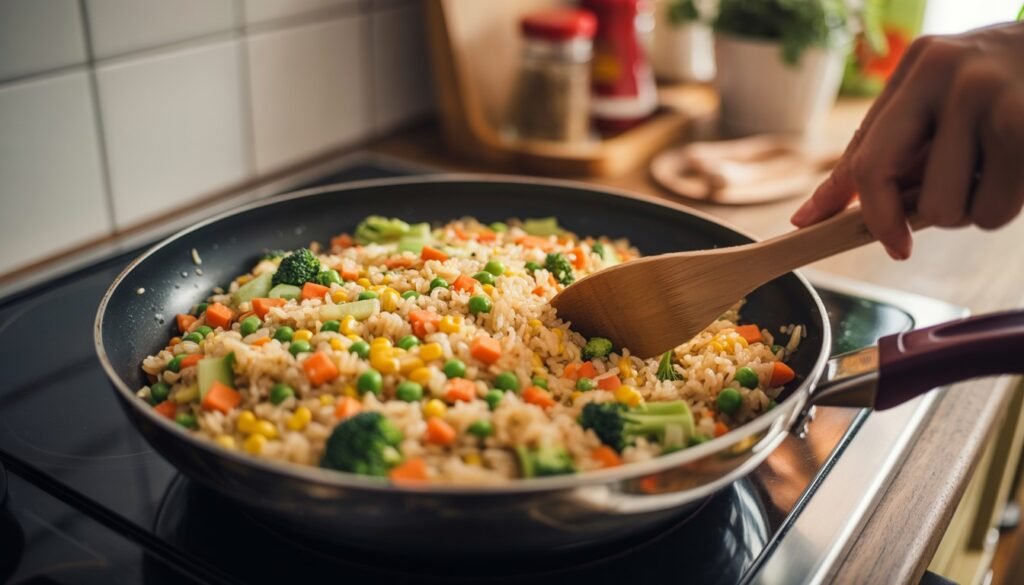
Add frozen mixed vegetables to the rice and stir-fry for 2 minutes until vegetables are heated through but still crisp.
Step 7: Combine Everything (2-3 minutes)
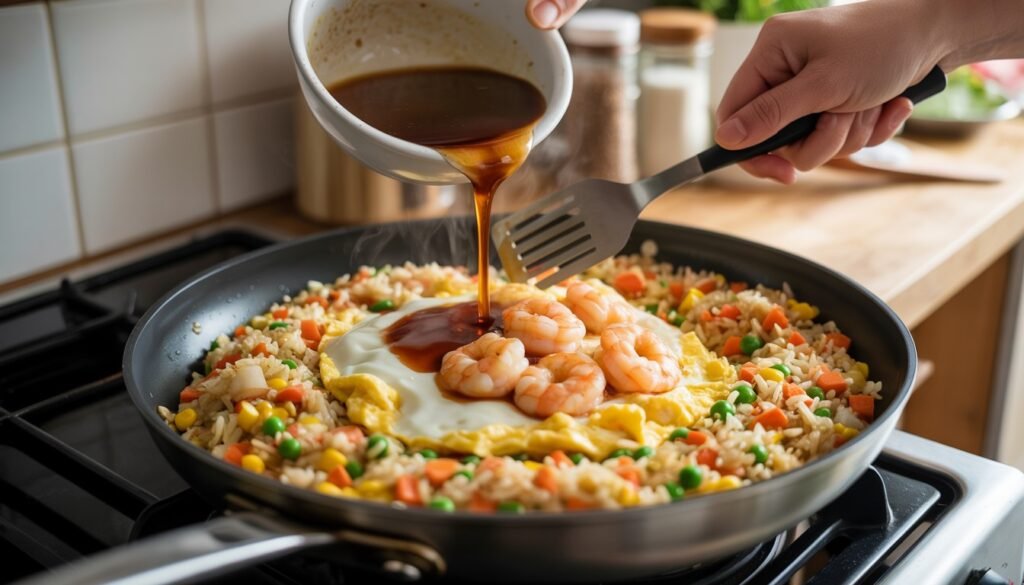
Return cooked shrimp and scrambled eggs to the pan. Pour the sauce mixture over everything and toss continuously for 1-2 minutes until all ingredients are well coated and heated through.
Step 8: Final Seasoning (1 minute)
Remove from heat and immediately stir in the green parts of the scallions. Taste and adjust seasoning with additional soy sauce, salt, or white pepper as needed.
Step 9: Serve
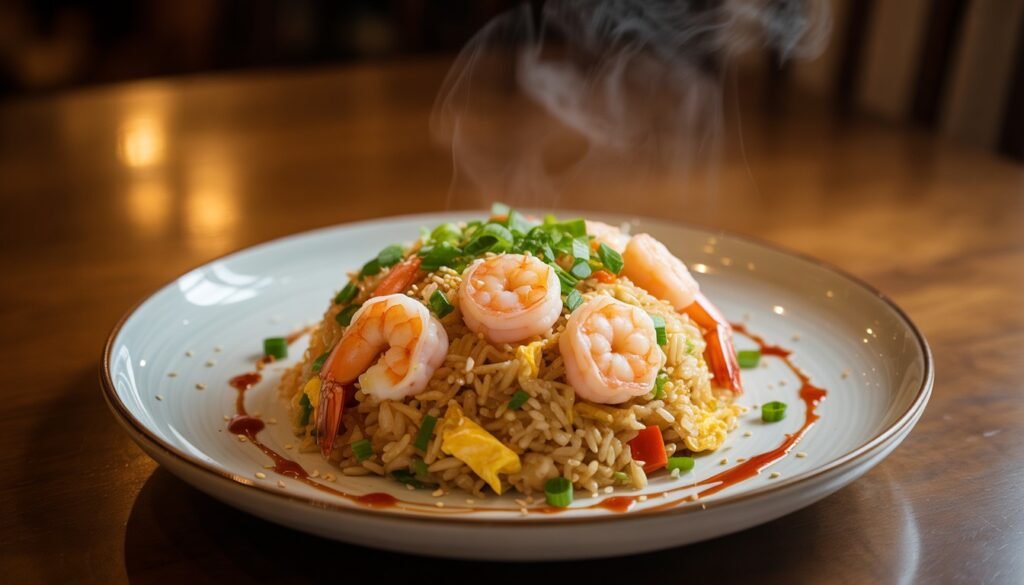
Serve immediately while hot, garnished with extra green onions, sesame seeds, or a drizzle of chili oil if desired.
Common Mistakes to Avoid
Using Fresh Rice Without Proper Drying
Fresh, hot rice will turn your fried rice into a gummy, sticky mess. The moisture content is too high, and the grains won’t separate properly. Always use day-old rice that’s been refrigerated, or emergency-dry fresh rice on a sheet pan until cold and dry.
Overcrowding the Pan
Cooking too much at once lowers the pan temperature and creates steam instead of the crispy texture you want. Cook in batches to maintain that screaming hot temperature that creates proper wok hei flavor.
Adding Sauce Too Early or Drowning the Rice
Adding sauce too early or using too much will make soggy shrimp fried rice. Add sauces near the end and toss continuously to distribute evenly without creating wet spots.
Not Getting the Pan Hot Enough
Your pan should be smoking hot before you add oil. If ingredients don’t sizzle immediately when they hit the pan, increase the heat and wait. This high heat is essential for proper texture and mild smokiness.
Serving Suggestions
Complete Chinese Meal
Create an authentic Chinese dinner by serving your homemade shrimp fried rice with:
- Sweet and sour pork or chicken for contrasting flavors
- Beef and broccoli for extra vegetables
- Spring rolls or pot stickers as appetizers
- Wonton soup to start the meal
- Fresh fruit or sweet soup for a traditional Chinese ending (fortune cookies are American-Chinese, not traditional Chinese, but fun for a playful finish)
Casual Family Dinner
This easy shrimp fried rice works perfectly as a one-dish meal. Round it out with:
- Simple cucumber salad with rice vinegar dressing
- Steamed edamame sprinkled with sea salt
- Fresh fruit like sliced oranges or pineapple
Party or Potluck
Make this recipe in large batches for crowds. For parties, keep it hot (above 140°F/60°C) or cold (below 40°F/4°C) and limit time at room temperature to 2 hours (1 hour if above 90°F/32°C). Provide small bowls of condiments on the side: sriracha, soy sauce, and sesame seeds.
Storage and Reheating Tips
Proper Storage Methods
Refrigerate within 2 hours (1 hour if >90°F/32°C) to limit bacterial growth, especially Bacillus cereus which can develop in rice left at room temperature. Store leftovers 3–4 days; for best quality, freeze up to 3–4 months (safe longer). The flavors actually improve as they meld together overnight.
Reheating for Best Results
Always reheat to 165°F/74°C for food safety. Here are the best methods:
Microwave Method: Add 1-2 tablespoons of water or broth, cover loosely, and heat in 1-minute intervals until reaching 165°F, stirring between intervals.
Stovetop Method: Heat in a skillet over medium heat with a splash of water or chicken broth, stirring frequently until reaching 165°F. This method restores some of the original texture.
Oven Method: Spread in a baking dish, sprinkle with a little water, cover with foil, and bake until the rice hits 165°F internal temperature.
Nutritional Benefits
High-Quality Protein Source
Shrimp provides lean protein with all essential amino acids while being naturally low in calories and saturated fat. Shrimp contains about 20 grams of protein per 3-ounce cooked serving, making this shrimp fried rice recipe a satisfying, muscle-building meal.
Balanced Macronutrients
This recipe provides an ideal balance of:
- Complex carbohydrates from rice for sustained energy
- Complete proteins from shrimp and eggs
- Healthy fats from cooking oil and eggs
- Essential vitamins and minerals from mixed vegetables
Customizable Nutrition
Easily adapt this homemade fried rice for various dietary needs:
- Lower sodium: Use reduced-sodium soy sauce and limit added salt
- Higher fiber: Substitute brown rice or add extra vegetables
- Gluten-free: Use certified GF tamari (check the label) or coconut aminos
Final Thoughts
This shrimp fried rice recipe proves that restaurant-quality Chinese food is totally achievable in your home kitchen. With the right technique – day-old rice, high heat, and proper timing – you’ll create a dish that rivals any takeout order. The secret lies in understanding that each component needs individual attention before bringing everything together in that final, flavor-packed toss.
Remember that cooking is about adapting recipes to your personal taste preferences and the ingredients available to you. Start with this easy base shrimp fried rice recipe, then experiment with different vegetables, proteins, and seasonings to create your signature version. The beauty of homemade fried rice lies in its flexibility and forgiving nature.
The techniques you learn here – high heat cooking, ingredient timing, and sauce control – will serve you well in countless other stir-fry dishes. Once you master this shrimp fried rice recipe, you’ll find yourself reaching for that wok more often and ordering takeout less frequently.
Most importantly, don’t stress about perfection. Even professional chefs needed practice to master wok hei. Focus on hot pans, dry rice, and quick movements, and you’ll be amazed at how quickly your skills improve.
Ready to transform your weeknight dinners? Gather your ingredients, heat up that pan, and discover the satisfaction of making authentic Chinese fried rice at home. Your family will be impressed, your wallet will thank you, and you’ll have a new go-to recipe for using up leftover rice and vegetables.
Love this recipe? Please share it with friends who appreciate good homemade food, and don’t forget to let us know in the comments how your shrimp fried rice adventure turns out. We’d love to hear about your creative variations and cooking successes!
Pro tip: Save this recipe for your next meal prep session – make a double batch on Sunday, and you’ll have delicious lunches ready all week. Happy cooking!
Frequently Asked Questions
Can I use brown rice instead of white rice?
Yes, brown rice works well in this fried rice recipe. Use the same day-old technique, but note that brown rice takes slightly longer to crisp up and has a nuttier flavor. You might want to add an extra splash of sesame oil to complement the nutty taste.
What size shrimp should I buy?
Use 31/40 count shrimp per pound (often sold as ‘large’). This size provides good texture without overpowering the other ingredients. Avoid jumbo shrimp, which can dominate the dish, and very small shrimp, which can get lost in the rice.
How do I know when the shrimp are properly cooked?
Cook shrimp just until pink and opaque (or to 145°F/63°C); they’ll curl into a loose ‘C’—a tight ‘O’ means overcooked. Overcooked shrimp become rubbery, so err on the side of slightly underdone since they’ll finish cooking when you add them back to the pan.
Can I make this recipe vegetarian?
Absolutely! Omit the shrimp and add extra eggs, tofu, or just load up on vegetables. You can also add nuts like cashews or peanuts for protein and crunch. Use vegetarian oyster sauce or substitute with additional soy sauce and a touch of sugar.
Why does my fried rice turn out mushy?
The most common cause is using fresh rice instead of day-old rice. Fresh rice contains too much moisture and will create a sticky mess. Always use rice that’s been refrigerated overnight, or emergency-dry fresh rice on a sheet pan until cold and dry.
Can I prepare this dish ahead of time?
While shrimp fried rice is best served immediately, you can prep all ingredients in advance. Cook the rice a day ahead, prep vegetables, and have your sauce mixed. The actual cooking takes only 15 minutes when everything is ready.
What’s the best oil for frying rice?
Use oils with high smoke points and neutral flavors like vegetable oil, canola oil, or peanut oil. Avoid olive oil, which has a lower smoke point and strong flavor that can compete with the Asian seasonings.
How can I make my fried rice more flavorful?
The key is building layers of flavor: properly seasoned shrimp, aromatics like garlic and ginger, quality soy and oyster sauces, and finishing with sesame oil and fresh green onions. Don’t forget that day-old rice and high heat create the signature wok hei flavor.
Can I freeze cooked shrimp fried rice?
Yes, this Chinese fried rice freezes well for up to 3-4 months. Cool completely before freezing, and store in airtight containers or freezer bags. Thaw overnight in the refrigerator before reheating to 165°F.
What vegetables work best in fried rice?
Classic choices include peas, carrots, and corn, but you can use bell peppers, snap peas, broccoli, mushrooms, or bean sprouts. The key is adding them at the right time – frozen vegetables need just 2 minutes, while fresh vegetables may need longer.


